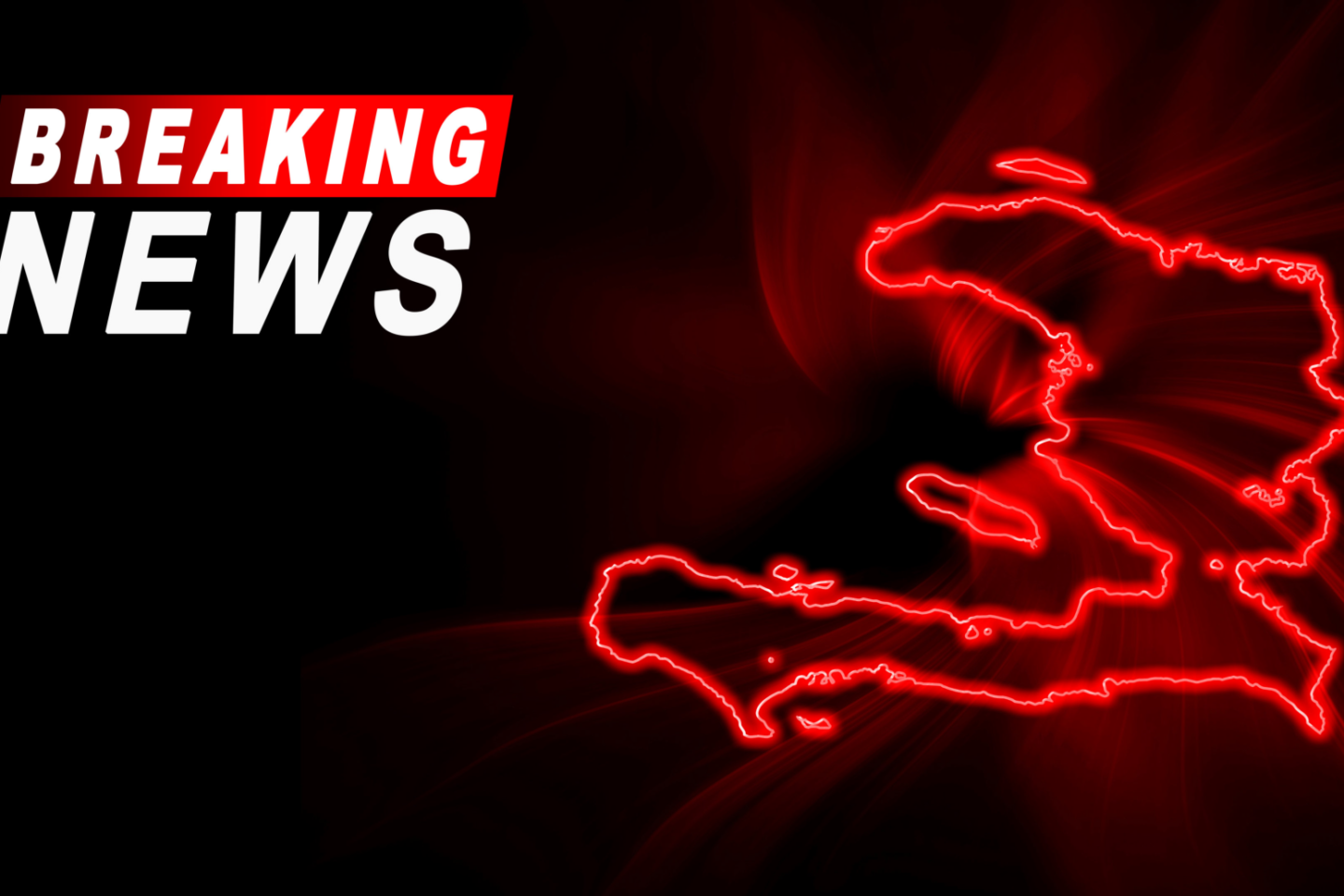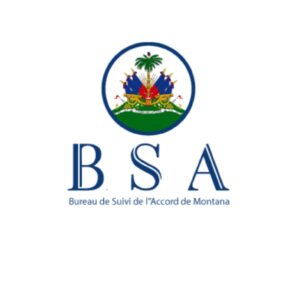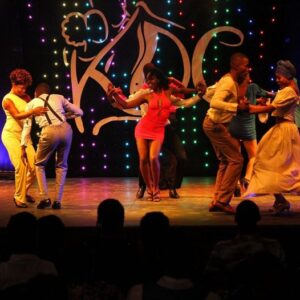Gangs have been besieging Port-au-Prince since February 29. Their leaders proclaim themselves revolutionaries wanting to transform a Haitian society ravaged by capitalist globalization. Can they really, as they claim, make a revolution? This is the main question addressed in the second part of this series.
By Ilionor Louis*
Submitted to AlterPresse on March 18, 2024
Can the gangs in Haiti make the revolution?
The answer is negative: the gangs in Haiti cannot make any revolution. They are just a tool in the hands of corrupt politicians, the ruling classes and the empire. Imagine heavily armed young people like them, taking revolutionary actions guided by their progressive ideological beliefs, challenging imperialist domination just 1,558 kilometers from Florida (United States). An intervention or attempted military intervention by the United States would be inevitable as was the case when Fidel Castro and his men were making revolution in Cuba. Weapons and ammunition for Haitian armed bands come from the United States. No effort is being made by the leaders to cut off the supply of arms and ammunition to these gangs.
Regarding the attitudes and behavior of these so-called revolutionaries, most of them not only wear caps or handkerchiefs bearing the image of the United States flag, but in their daily speech, they borrow words from American English (Yeah, Ever, But, So). They love American currency. Thus, they display on social networks, as the spoils of their criminal actions, bundles of greenbacks. They are also fascinated by a lifestyle based on a mode of consumption resulting in the construction of luxury houses (in the slums), large swimming pools, the organization of large celebration parties, the hyper sexualization of the body of women among others.
In terms of relations of complicity with the Empire, one of the functions of gangs is to stifle popular revolts, especially those which demand a real change of system, a break with imperialist domination. Without the consent of gang leaders in working-class neighborhoods, there can be neither popular organization nor participation of populations in popular anti-system demonstrations. Gang leaders behave like bosses in their territory, wanting to control everything. They “carry out a substitute for social work, ensure control of the territory and a reservoir of votes among politicians and members of the oligarchy”. According to Alex Johnson, Jimmy Chérizier, the spokesperson for the Platform Live together armed bands, “has long-standing ties to a section of the Haitian bourgeoisie represented by the Haitian Parti Tèt Kale (PHTK), which includes the Clinton-backed puppet regime of former President Michel.” Sweet Micky “(Sweet Mickey) Martelly and Moise, the latter known for having unleashed his forces in violent repressions against popular opposition to his presidency.”
From there, we ask ourselves a question: was the overthrow of Ariel Henry really the work of armed gangs? Or is it a diversion of the system to get rid of Mr. Henry who has become a cumbersome package who could not deliver any other result than the rise in the prices of petroleum products after more than thirty months of reign? Everything suggests that the gang leaders are not free in their actions despite their supposed autonomy proclaimed by their spokesperson during his public performances. Gangs are just an offshoot of the system and probably need a social revolution to wipe them out.
Main actions taken by gangs in the current situation
The main actions of gangs in the current situation consist of going up to barricades to prevent police intervention, parading through the streets heavily armed, looting stores, vandalizing bank branches by taking away the cash registers and everything they find there, raping women and girls, kidnap individuals, burn houses, attack police stations and sub-stations, set fire to them among others. They attack prisons by freeing their peers, unjustly incarcerated, according to them. Thus, they almost destroyed the main detention center in the country called: National Penitentiary. In the commune of Croix-des-Bouquets, located twenty (20) kilometers north of Port-au-Prince, they destroyed another detention center. Previously, Canaan gang members set fire to the women’s prison located in Cabaret.
In addition to the prisons, they attacked the Toussaint Louverture International Airport in Port-au-Prince. But they came up against resistance from members of the young army of the Republic in the process of rebuilding. They had to backtrack. As I write these notes, they have just looted the National Port Authority (NPA) taking away many goods kept in containers. They promise to continue the same actions until their goals are achieved. If the resignation of the de facto Prime Minister, Ariel Henry, is not obtained, they predict a genocide which they already blame on the responsibility of the international community, especially the United States, accused of protecting Ariel Henry. It seems that their objectives, through this declaration, are reduced to the resignation of the de facto Prime Minister. Before entering into the analysis of the latest actions taken by the gangs, let us see how gangs were formed in the recent history of the country and the relations maintained with certain sectors.
Gangs and their relationships in Port-au-Prince
Contrary to the hypothesis according to which the application of neoliberal policies and the corruption of political and economic elites constitute determinants of the formation of gangs in Port-au-Prince, other authors believe that the history of gangs is closely linked to the evolution of the political situation in the country, that is to say to the bankruptcy of the State. the proliferation of armed groups in Haiti is the direct consequence of the absence of the State in precarious neighborhoods. Citizens, for the most part, are at the mercy of gang leaders who set themselves up as benefactors, and benefit from the consent of the population in their areas of domination. This multiplication of armed bands is also part of a logic of “power”. It is an undeniable fact that some of these groups are known to be close to the government in power, others are close to certain opposition politicians. Therefore, the use of gangs in Haiti has become, for around twenty years, a strategy of struggle for the conquest of power, the overthrow, but also the maintenance of power. Therefore, gangs today are inherent to the ruling power, which, naturally, supports them with ammunition and money.” In addition to members of the Haitian political class, the gangs develop relationships with:
• non-elected people but having relationships with elected officials. Those not elected are ministers or representatives of political parties in power. They are used by those in power to supply gangs with money, weapons and ammunition. The testimonies of certain gang leaders arrested and imprisoned are eloquent in this sense. The National Network for the Defense of Human Rights (RNDDH) denounces the links between gang leader Vitelhomme Innocent, senior officers of the Haitian National Police (PNH) and members of the de facto government in Haiti.
• NGOs, neighborhood associations or foundations. The relations of NGOs with gangs are often based on negotiation with a view to allowing the intervention of the NGO on the ground or on confrontation if the NGO does not cooperate. The negotiation involves the allocation of a share of the NGO project budget to the gang leader. Certain NGOs operating in the municipality of Cité Soleil can attest to this. Gangs have tried to transform themselves into a non-profit association to do what they call “social work”, that is to say, distribute food to needy families, organize clean-up days in their neighborhood or organize festive evenings among others…. The association serves as an umbrella for the gang to clear itself of delinquent or illegal activities but also to address requests to entrepreneurs, store or factory owners, in the gangsters’ neighborhood.
• entrepreneurs (especially large entrepreneurs). With entrepreneurs, gangsters develop mechanical relationships based on recognition of the gang’s capacity to cause harm. As a result, they enter into the gang’s makeover scheme by providing subsidies in return for the security of their businesses. If for the gangsters the entrepreneur and his company constitute an opportunity to create economic capital, for the entrepreneur himself, the gangster and his foundation constitute a guarantee of the security of his company. In the report of the UN group of experts, large entrepreneurs are accused of using gangs to move their goods and to disperse demonstrators. There is, therefore, a reciprocal need between gangs and entrepreneurs in terms of acquisition and accumulation of capital.
• journalists. The gangs’ relationships with journalists are controversial. On the one hand, gangs have murdered and persecuted several journalists in Port-au-Prince. On the other hand, they develop relationships with star journalists from certain current affairs programs to improve their image, sometimes to boast of their power or capacity to cause harm. For their part, journalists are looking to increase their audience through the unprecedented, the sensational. They have the telephone number of the gang leader, can call him during the broadcast to invite him to speak while he is supposedly wanted by the police. This led Rebecca Bruny to affirm that “even in the established media, bandits influence the information in Haiti”. Gang leaders like to invite the media to give press conferences in Port-au-Prince.
Finally, to return to politicians, the gangs mainly develop casual relationships with them, as with journalists. If the politician has no power or is not in power, relations with gang leaders immediately fall apart. While these relationships can be more lasting with entrepreneurs. Today, we cannot say that politicians control the gangs. Neither do the economic elites. Criminal gangs are sowing terror and holding the Haitian capital under siege. According to Robenson Geffrard of the Journal Le Nouvelliste “the different gangs have more than 3,000 soldiers and as many weapons, according to the Haitian authorities.” Citing the National Strategy for Disarmament, Dismantling and Reintegration (SNDDR), he adds that “in 2019, around 162 armed groups were listed on the national territory, half of which operate in the metropolitan area”. But to this number, it is absolutely necessary to add latent bases that are little known but which are also potentially dangerous, according to the SNDDR. Thus, they represent a great threat to the security of lives and property in the City, thus compromising living together. Today they are besieging the metropolitan area of Port-au-Prince.
Paramilitaries, gangs and neoliberalism
To conclude, I would like to take up the thesis according to which the gangs in Port-au-Prince are a product of neoliberalism in the current state of things as well as a derivative of the corruption which plagues the political and economic elites. They are both consequence and tools of a system which rec each time to armed groups against the working classes. But paradoxically, those who burn working-class neighborhoods, rape women and girls, murder young people, ransom small merchants, vandalize schools and hospitals among others, come from the masses. They do it in the current context, in Haiti, in the name of a word, a concept so overused, misunderstood even by those who never tire of repeating it: the REVOLUTION.
This is not the first time that groups, enemies of the people, whose members are recruited from among the people, call themselves revolutionaries. After the coup d’état of September 30, 1991 which cost the lives of several thousand Haitians living mainly in working-class neighborhoods, Emmanuel “Toto” Constant founded a paramilitary organization called the Armed Revolutionary Front for the Progress of Haiti (FRAPH) . This organization, supported by soldiers who carried out the Coup, is responsible for several massacres perpetrated in working-class neighborhoods. Like the paramilitaries, the gangs are the enemies of the “big people”, particularly the populations relegated to the slums of Port-au-Prince.
Either in Port-au-Prince (in Haiti) or in Latin America (particularly Central America) the system always uses paramilitaries to dissuade or crush popular movements or left-wing guerrillas during the time of military dictatorships. In Guatemala, in the middle of the 20th century, “President Harry Truman authorized the CIA to undertake, with the support of the dictator Anastasio Somosa, an operation aimed at overthrowing the Arbenz regime”. The coup finally took place under the administration of Dwight Eisenhower, in June 1954. Arbenz had to go into exile. What followed was a civil war which lasted 36 years and left nearly 200,000 dead and missing, particularly among the Indian population. The civil war ended in this country with the signing of a peace agreement on December 29, 1996, between President Alvaro Arzù and the guerrillas. In Central America, Guatemala is considered “a privileged terrain of Cold War conflicts and a cutting-edge laboratory for “psychological treatments” stemming from the United States’ experiences in Vietnam.” The gangs will begin to settle in Guatemala, starting in the 1980s with illegal immigrants from Honduras and El Salvador fleeing difficult living conditions. The situation has worsened in the country with the construction of a fragile democracy, structural reforms having thrown many families into poverty. “Guatemala is a country that faces socio-economic challenges in 2023 such as poverty, inequality and crime. This is a major problem, with high rates of homicides, thefts and human trafficking. Factors contributing to crime include poverty, unemployment, weak state institutions, corruption and drug trafficking due to Guatemala’s geographical position. This country is today ranked among the 20 most violent countries in the world with only 4,078 murders in 2021, an increase of 16.5% compared to 2020. More than 60% of homicides were due to gunshot wounds. After the civil war, the transition to neoliberalism with its procession of violence, homicides, human trafficking, drug trafficking seems as criminal as the civil war. There is even thought to be a link between the civil war and crime in Guatemala.
In El Salvador, against the Farabundo Marti National Liberation Front (FMLN), supported by Cuba and Nicaragua, the military government supported by the United States, waged a merciless war. The Civil War broke out in 1979 and ended with the signing of the peace agreements in 1982. Until the arrival of Nayib Bukele to power, the gangs reigned terror in El Salvador through trafficking, attacks, threats and extortion. What is at the root of the explosion of gangs in El Salvador is poverty and state weakness, in addition to the expulsion by the United States of thousands of detainees from delinquent networks in Los Angeles (United States) to late 1990s.
Likewise, in Nicaragua, the Contras fought against the Sandinista government. The United States, through the CIA, publicly supported these armed groups. Under the Sandinista regime, a whole series of social programs were adopted during the 1980s, which “made many people dream, both in Nicaragua and abroad”. Benjamin Bastida and Maria Teresa Virgili, referring to Nicaragua from 1979 to 1989, describe the Sandinista program as a “utopian socialist program”. There was no room for gangs but the system fueled paramilitaries to fight the Sandinista regime. The Sandinistas lost power in 1990. “Since then, (Nicaragua) has fallen into line, diligently implementing the neoliberal policies of the Washington Consensus, becoming ever poorer with each passing year, to the point where it was one of the three Latin American beneficiaries of the Heavily Indebted Poor Countries program. The way has been opened for gangsters.
Today, times have changed. We are rather in the era of “the exhaustion of warlike models and the discovery of democratic schemes”. However, democratic transition has not occurred in all countries ruled by dictatorships. If at the time of the guerrillas the empire supported paramilitaries, at the time of fragile democratic regimes, political instability, massive poverty, gangs or terrorist groups are born likely to be used by the empire, despite the famous slogans (we do not negotiate with terrorists) to fight or even overthrow governments. If there are differences between gangs and paramilitaries, they have things in common: massacring working-class neighborhoods, raping women, trafficking humans, creating a reign of terror. There are no more left-wing guerrillas, the way is clear. The gangs can count on the local bourgeoisie (oligarchs), crooked politicians, the international mafia. Their weapons and ammunition are made in the USA. They never lack enough to commit their crimes. No need to have an army or much better equipped police to suppress them because they pose no real threat to the system. It will only end when the masses understand that we must organize to fight them. For this to happen, intellectuals, academics, and students will need to understand the urgent need to bridge the gap between themselves and the masses.
*Sociologist, teacher
See the original article with notes:
https://blogs.mediapart.fr/ilionorlouis/blog/180324/comprendre-la-dynamique-des-gangs-port-au-prince#_edn19
Photo: Archives








